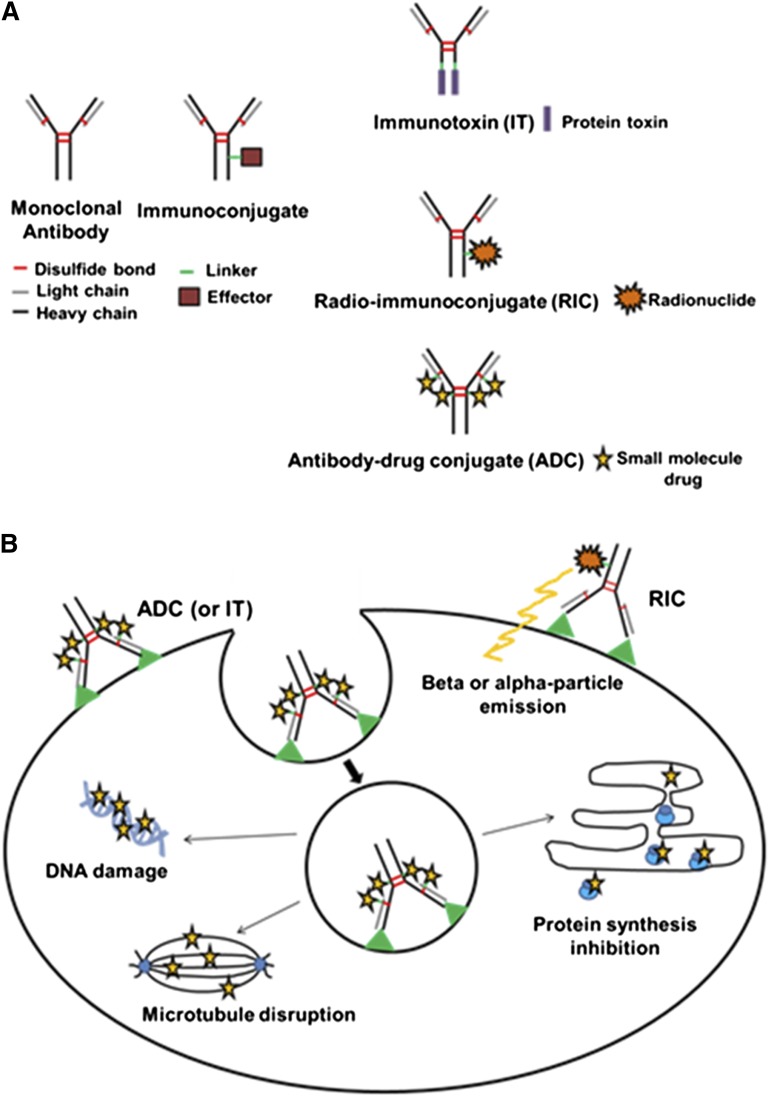Figure 1.
IC structure and mechanism of action. (A) IC types. Schematic diagrams of both a monoclonal antibody and an IC are depicted. An IC consists of a monoclonal antibody, linker, and effector molecule. The 3 general categories of ICs linked to different effector molecules are shown. An IT contains a protein toxin while an RIC possesses a radionuclide. An ADC carries a small-drug molecule. (B) Mechanism of IC activity. The mechanisms of action for the various ICs are illustrated. All ICs recognize and bind to a cognate tumor antigen or receptor. For ITs and ADCs, internalization via receptor-mediated endocytosis is required for entry into the target cell. Subsequent release of the effector moiety from the IC occurs via the conditional cleavage of the linker or protease degradation of the antibody within the endosomal/lysosomal compartment. The released effector toxin or drug diffuses into the cytoplasm and inhibits tumor growth by disruption of microtubules (ADC), damage to DNA (ADC), or inhibition of protein synthesis (IT). For RICs, internalization is not required for cell penetration and damage by the emitted α- or β-particles from the effector radionuclide.

